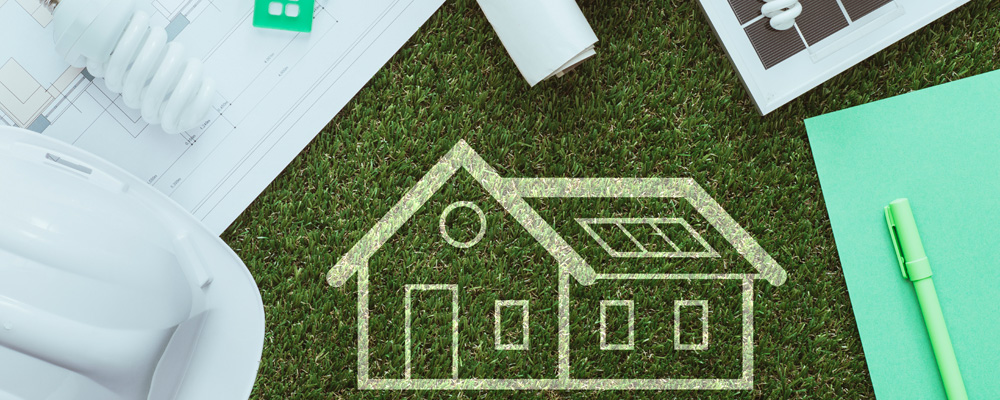Sustainable, energy-efficient commercial buildings save money on maintenance and upkeep. They also tend to attract better lease terms for tenants and are better for the environment. But up until recently, the tax deduction for energy-efficient improvements to the building envelope, known as Section 179D, wasn’t considered strong enough to motivate many taxpayers to make the more expensive upgrades needed to qualify.
The Inflation Reduction Act (IRA) made 179D permanent, expanded its benefits, and added a provision for retrofits of existing buildings. Though access to 179D has been improved, questions remained about how to apply different standards to measure energy savings.
Background on 179D
179D was first introduced in 2005 as a temporary tax incentive for energy-efficient commercial building design. Congress extended it five more times until the deduction was allowed to lapse at the end of 2016. The Consolidated Appropriations Act made 179D permanent and retroactively reinstated it for the 2018 and 2019 tax years.
Eligible building systems have included the building envelope – such as the roof, walls, windows, and doors – as well as interior lighting and HVAC. Examples of applicable energy-efficient improvements include insulation with a high R-value, certain roofing systems, solar integration, daylighting, and much more.
Up until the IRA, a building had to reduce overall building energy use by 50 percent for the full tax benefit. Deduction amounts changed over time; for example:
The full 179D deduction for buildings placed in service prior to 2021 was $1.80 per square foot; in 2021, that amount increased to $1.82 per square foot, and in 2022, $1.88 per square foot.
Energy upgrades to individual systems have been another path to partial deductions. A ten percent energy savings in the building envelope could result in a deduction ranging from $0.60 per square foot to $0.63 per square foot, depending on when the building was placed in service.
The deduction amount can be written off in the same year the building is placed in service, providing valuable (and immediate) cash flow. But not all projects qualify: historically, most tax-exempt commercial building projects would need to transfer the tax deduction to the designer or contractor. And meeting the required energy savings thresholds has been difficult for existing buildings, making energy efficient retrofits less of an incentive.
2022’s IRA made several changes and improvements to how 179D works for 2023 and beyond; notably, the deduction will now be more accessible for certain renovation projects. The deduction’s full value has also been significantly increased depending on prevailing wage and apprenticeship requirements.
179D Changes in the Inflation Reduction Act
Moving forward, 179D will have a lower base deduction amount of $0.50 per square foot but can go all the way up to $5.00 per square foot for full energy reduction amounts plus new labor rules. The new deduction amounts are as follows.
- $0.50 per square foot: 25 percent energy reduction in the overall building
- Plus an extra $.02 for each percentage point above 25 percent energy reduction up to $1.00
- $1.00 per square foot: 50 percent energy reduction in the overall building
- $2.50 per square foot: 25 percent energy reduction in the overall building plus prevailing wage and apprenticeship hours
- Plus an extra $.10 per square foot for each percentage point above 25 percent energy reduction up to $5.00
- $5.00 per square foot: 50 percent energy reduction in the overall building plus prevailing wage and apprenticeship hours
Building owners can claim 179D every three years with qualifying upgrades. And starting in 2023, REITs and tax-exempt buildings can also take the deduction, further expanding its use and value.
Meeting the requirements for the full tax deduction will now mean incorporating prevailing wage and apprenticeship hours for all new construction projects. In some cases, the new labor rules will apply to alterations or repairs as well. This requirement applies to all clean energy tax incentives in the IRA, including 179D, 45L, and several other production and investment tax credits.
General and subcontractors must pay local prevailing wage rates to laborers and mechanics, and independent contractors from when construction begins to five years after the building is placed in service. The apprenticeship requirement comes into play if four or more people are on the job; the minimum apprenticeship hours gradually increase from ten percent in 2022 to 15 percent in 2024 and beyond.
There are few exceptions to the labor and apprenticeship rules, so contractors and owners may need to plan more carefully to claim the full deduction for an upcoming project.
Updated 179D Guidance for 2023 and Beyond
In late December 2022, the IRS released new guidance for 179D to help clear up questions about reference standards from both the IRA and 2020’s Taxpayer Certainty and Disaster Tax Relief Act.
The IRA changed the reference date for energy standards to the date the property is placed in service. In doing so, many taxpayers became confused about which reference standard to use to determine the correct tax deduction.
- For buildings placed in service before January 1, 2015, taxpayers would use the reference standard 1-2001.
- Buildings placed in service between January 1, 2015 and December 31, 2026 must use standard 1-2007.
- Buildings placed in service after December 31, 2026 must use standard 1-2019.
Version 90.1-2007 can be used for construction that began before January 1, 2023 regardless of when the building is actually placed in service.
More guidance will follow on how to measure energy use intensity to calculate the alternative deduction for energy efficient building retrofit property. The IRS also will issue more information on the separate 179D rules for retrofits.
As 179D is now a permanent part of the tax code, real estate owners can prepare more long-term tax plans for sustainable building projects. When questions about the tax benefits come up, taxpayers can reach out to Tax Partner Ryan Paul, CPA in PBMares’ Construction and Real Estate practice.





